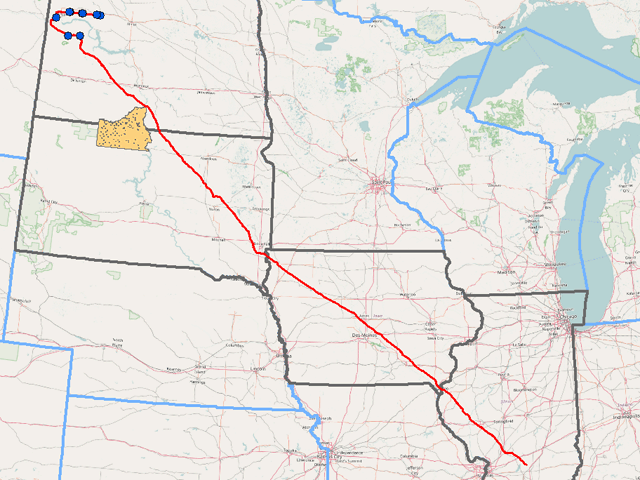Corps: Keep Dakota Access Pipeline Open
Corps Tells Court Environmental Study of Dakota Access Could Last Into 2022
LINCOLN, Neb. (DTN) -- The U.S. Army Corps of Engineers recommends leaving the Dakota Access Pipeline open while it conducts an environmental analysis that could last into March 2022. The Corps stated this position in a court filing in federal court on a case that could eventually lead to the pipeline's closing.
The Corps of Engineers provided a status report to the U.S. District Court for the District of Columbia on Monday, in a case where the Standing Rock Sioux Tribe filed a motion for a permanent injunction against the pipeline. In addition, on April 12, the pipeline owner requested a motion for an en banc hearing before the entire U.S. Court of Appeals for the District of Columbia Circuit. An en banc hearing is a hearing before all judges in a circuit.
"The Corps expects to use that timeframe to fulfill its commitment to undertaking an open, transparent, and public EIS (environmental impact statement) process which rigorously explores and objectively evaluates reasonable alternatives," the government said in its status report.
"Further, the Corps is committed to robust tribal consultations and to actively engaging with the cooperating agencies, which include several plaintiff tribes, to produce a thorough and comprehensive EIS. It is possible that in the EIS process the Corps would find new information, but to date, the Corps is not aware of information that would cause it to evaluate the injunction factors differently than in its previous filing."
Back in January, the D.C. Circuit court ruled Dakota Access violated the law by conducting work on the pipeline without an easement.
In April, Dakota Access asked the appeals court for an en banc hearing, arguing the U.S. Army Corps of Engineers had conducted an environmental review, although the court ruled otherwise, https://www.dtnpf.com/….
P[L1] D[0x0] M[300x250] OOP[F] ADUNIT[] T[]
The Dakota Access pipeline was constructed underneath Lake Oahe, which was created when the Corps flooded thousands of acres of Sioux lands in the Dakotas by constructing the Oahe Dam on the Missouri River.
The lake provides several successor tribes of the Great Sioux Nation with water for drinking, industry, and sacred cultural practices. According to the Mineral Leasing Act, the pipeline could not traverse the federally owned land at the Oahe crossing site without an easement from the Corps.
In January, the appeals court ruled the pipeline could continue to operate while the Corps conducted a review, https://www.dtnpf.com/….
In December 2020, 14 states alleged in a brief that the closing of the pipeline could hurt agricultural economies in the Midwest because of expected cost increases to ship grain.
In an amicus brief filed with the court, the states of Indiana, Montana, Iowa, Kansas, Kentucky, Louisiana, Missouri, Nebraska, Ohio, South Carolina, South Dakota, Utah, West Virginia and Wyoming sided with agriculture interests, the pipeline company and the Corps of Engineers.
The state of North Dakota recently filed a motion to intervene in the case. On Monday, the Standing Rock Sioux Tribe and other tribes filed a motion in opposition to the state's action.
"The state's motion to intervene should be denied because it is untimely, and because the state's interests in the easement will not, as a practical matter, be impaired if it is denied intervention, given both the zealousness of the defense of this action by Dakota Access, the current status of the proceedings in this case, and the state's status as a permitted amicus curiae," the tribes said.
If agriculture has to compete for railway and truck service, the brief said, agriculture will face "intractable railroad congestion, rotting grain, higher food prices, and ultimately, a potential for food shortages."
From April 2016 to February 2017, Native American and other groups protested the construction of the pipeline running from the Bakken oil fields in western North Dakota and crossing the Missouri and Mississippi rivers to southern Illinois.
Part of the pipeline runs near the Standing Rock Indian Reservation. Protests centered on concerns about the pipeline's effect on water supplies used for irrigation, drinking water and threats to ancient burial grounds.
The appeals court ruled the Corps violated environmental law in 2017 when it allowed the pipeline owner, Energy Transfer, to build beneath South Dakota's Lake Oahe.
Todd Neeley can be reached at todd.neeley@dtn.com
Follow him on Twitter @toddneeleyDTN
(c) Copyright 2021 DTN, LLC. All rights reserved.




